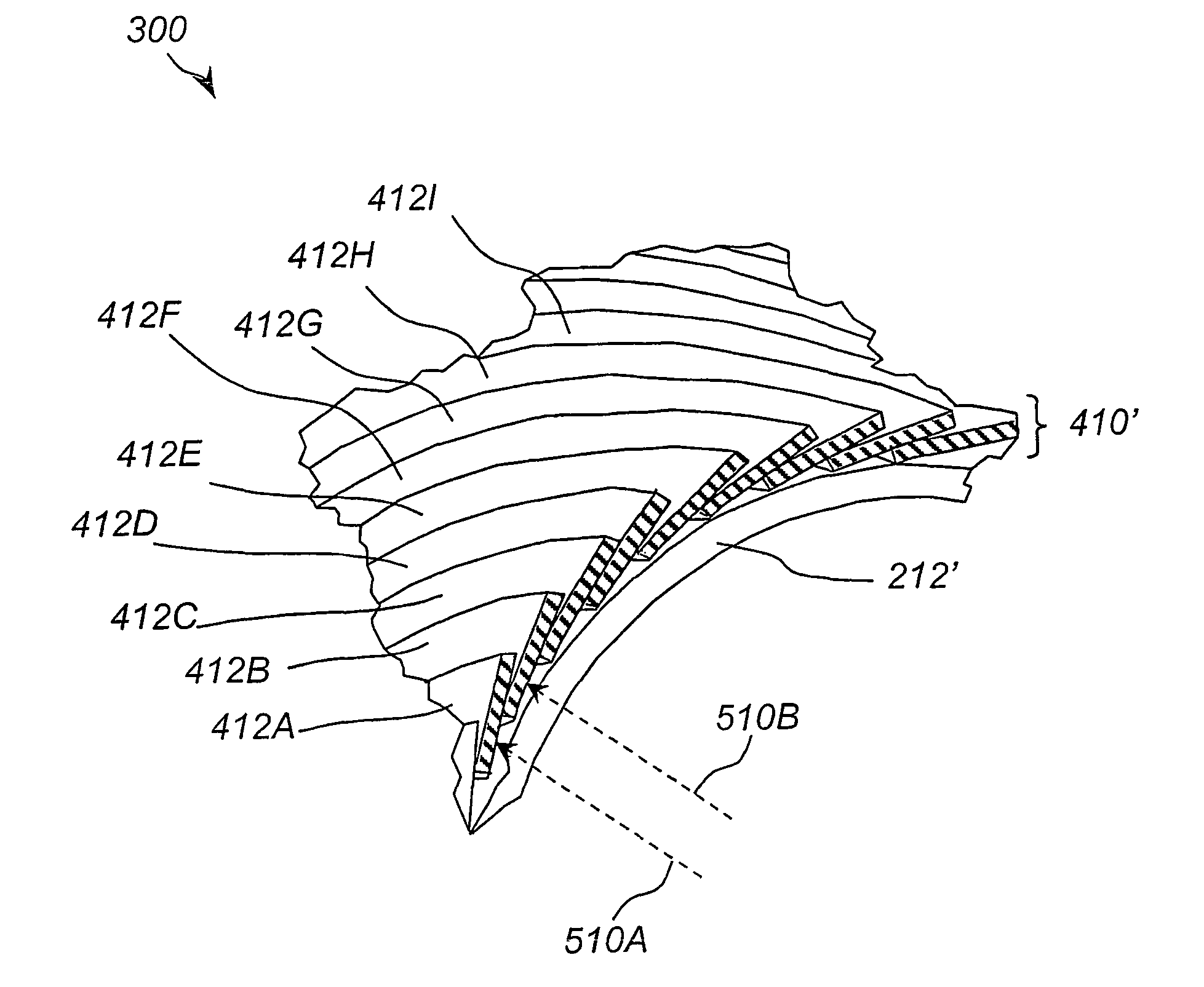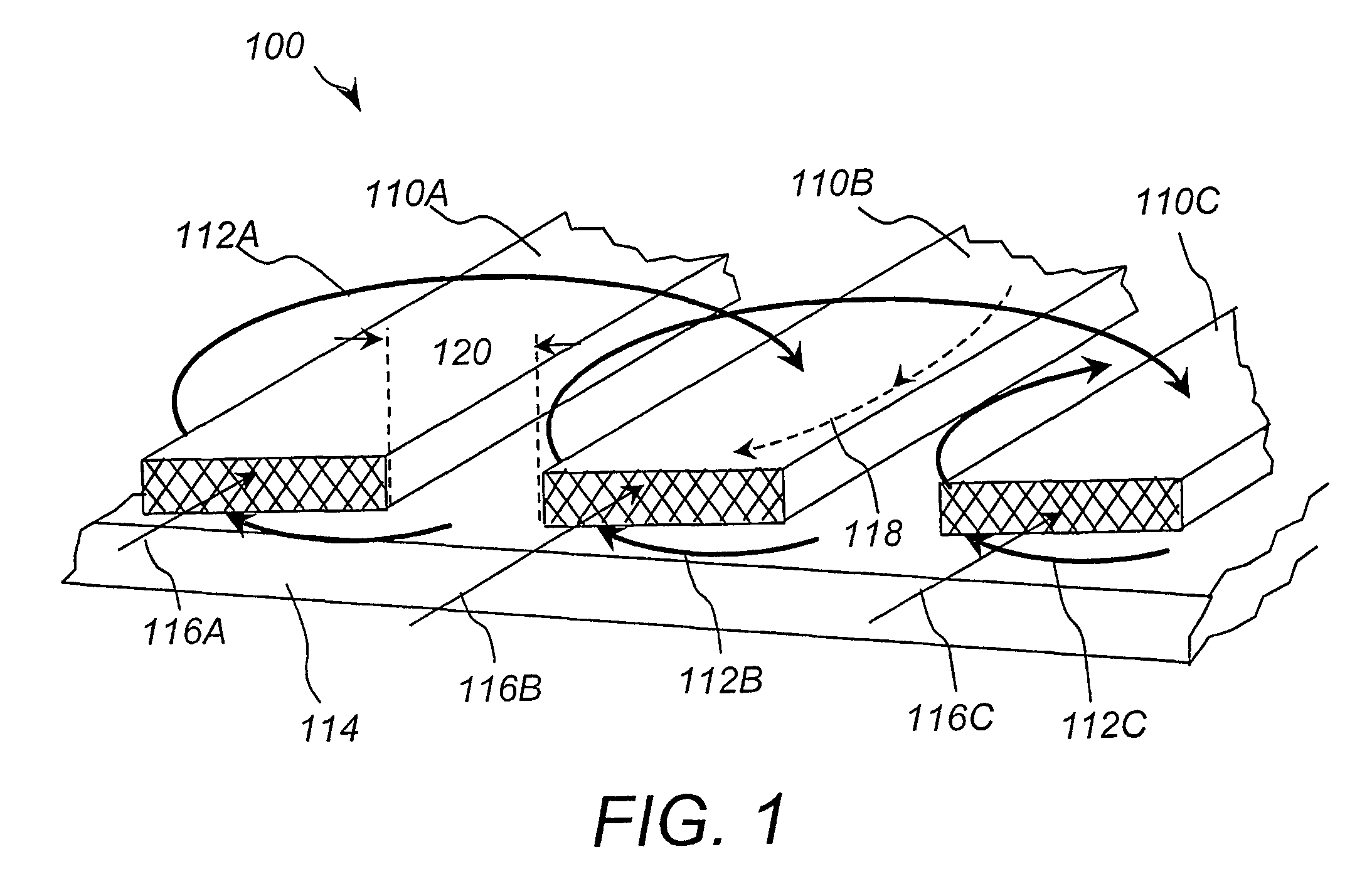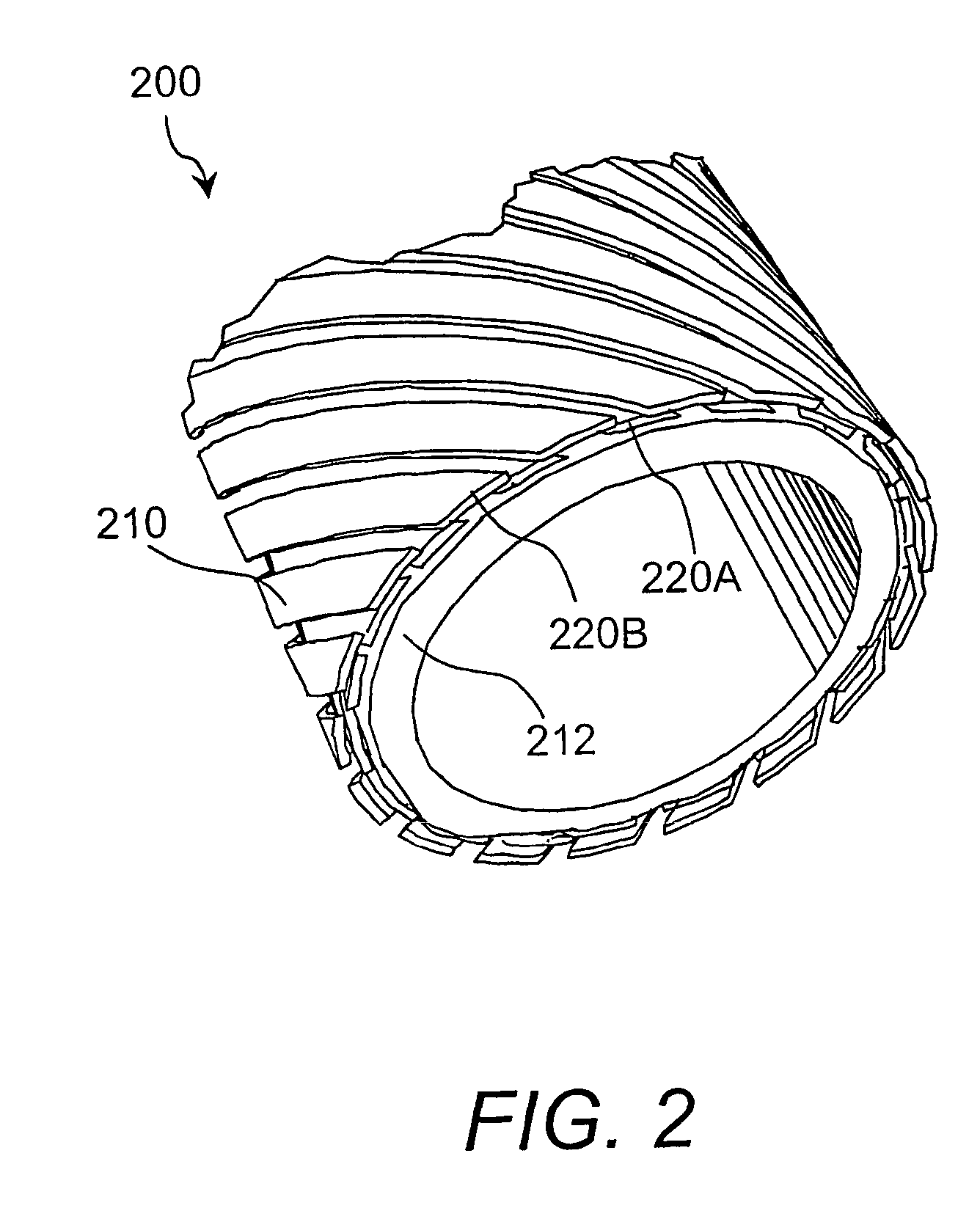Low alternating current (AC) loss superconducting cable
a superconducting cable and low alternating current technology, applied in the direction of superconducting magnets/coils, superconductor devices, magnetic bodies, etc., can solve the problem of significant source of ac loss, and achieve the effect of reducing ac losses, significantly reducing ac losses, and minimizing ac losses
- Summary
- Abstract
- Description
- Claims
- Application Information
AI Technical Summary
Benefits of technology
Problems solved by technology
Method used
Image
Examples
Embodiment Construction
[0027]The present invention relates to superconductor tapes, fabrication methods and configurations that are designed to minimize the AC losses in a superconducting cable or assembly. Superconducting tapes of various compositions are well known. Suitable high-temperature superconductor tapes are for example Bi-2223 superconducting tapes, and include, but are not limited to, those superconductor tapes that are formed from any of the following families of superconductive materials: cuprates (such as YBCO or BSCCO), diborides, or metallic superconductors.
[0028]Suitable HTS tapes can be flat and can also be elliptical, or rectangular. HTS tapes are typically from about 0.001 mm to about 10 mm thick and from about 0.5 mm to as wide as convenient for the design of the superconducting assembly. The HTS tapes can be either monocore or multifilament, thin or thick film, powder-in-tube or surface-coated, or any variety of high-temperature superconductors where the final form is flat, elliptic...
PUM
| Property | Measurement | Unit |
|---|---|---|
| thickness | aaaaa | aaaaa |
| AC frequency | aaaaa | aaaaa |
| thick | aaaaa | aaaaa |
Abstract
Description
Claims
Application Information
 Login to View More
Login to View More - R&D
- Intellectual Property
- Life Sciences
- Materials
- Tech Scout
- Unparalleled Data Quality
- Higher Quality Content
- 60% Fewer Hallucinations
Browse by: Latest US Patents, China's latest patents, Technical Efficacy Thesaurus, Application Domain, Technology Topic, Popular Technical Reports.
© 2025 PatSnap. All rights reserved.Legal|Privacy policy|Modern Slavery Act Transparency Statement|Sitemap|About US| Contact US: help@patsnap.com



